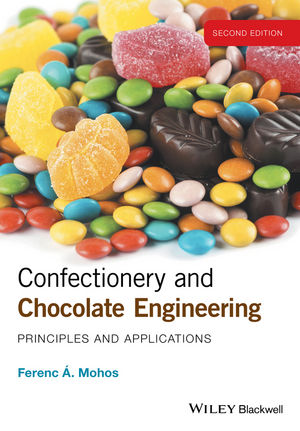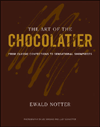Candy Industry Senior Editor Liz Parker was recently able to connect with Kyle Krause, regional product manager, functional fibers and carbohydrates, North America, BENEO, on innovation and portion sizes in confectionery.
Liz Parker: How are confectionery manufacturers planning to innovate this year, in terms of indulgence? What about using prebiotic chicory root fiber in place of sugar in chocolate, and how can confectioners use fewer sweeteners but still maintain great taste?
Kyle Krause: Chicory root is an excellent sugar replacer in chocolate. It can be easily combined with natural sweeteners to fill back in sweetness lost from sucrose. Some chicory root fibers are slightly sweet and provide a synergistic sweetening effect. So, in this case, a healthy indulgence is achieved.
Customers want better-for-you options, even in product categories that are associated with indulgence—for example, 6 in 10 consumers globally look for healthier alternatives or to be more aware of mindful snacking.[1] And in the U.S., 70% of consumers want to see more healthy cookies for children.[2]
However, taste is essential, especially in the indulgent category. Therefore, manufacturers look for ingredients that contribute to a better-for-you profile while at the same time maintaining the essential taste and texture attributes that meet customer expectations.
BENEO’s chicory root fiber ingredients (inulin and oligofructose) provide attractive solutions for brand owners to launch healthier confections and snacks. Chicory root fiber helps manufacturers improve a product’s nutritional profile by reducing sugar and fat while maintaining the same indulgence factor. At only 2 calories/gram, any decrease in sugar or fat also carries a desired calorie reduction.
Additionally, being a prebiotic fiber, it supports digestive health. By nourishing the good bacteria of the gut microbiota, chicory root fiber can contribute to improved bowel function[3], blood glucose management[4], stronger inner defense[5], and weight management[6]. As a soluble fiber with a neutral and slightly sweet taste profile, this ingredient can seamlessly be used in confections and snacks.
BENEO offers a wide range of powder and liquid ingredients available that are created from inulin (and its shorter fructose-bound fiber chains of oligofructose) that are originally obtained from chicory root via a gentle hot water extraction. This harvesting and subsequent production from nature clearly distinguishes them from certain other fibers, which are made indigestible by chemical and enzymatic modifications. There are even organic chicory root options.
LP: How can satiety be achieved with less sweeteners?
KK: Especially when it comes to indulgence products, a convincing taste experience is paramount. By adding chicory root fiber, the taste and texture of a product are not compromised. Many chicory root fiber ingredients have sugar-like technical properties, including providing a bulking effect by adding solids, and are therefore perfectly suitable as natural sugar reducers. The bulking benefit is widely seen in low-/no-added-sugar chocolate.
For fat reduction, inulin ingredients with longer average degrees of polymerization can act as fat replacers. While still being soluble, these chicory root fiber ingredients can be used in moist or semi-moist snack applications as a fat replacer. They can stabilize water into a creamy structure, mimicking fat and providing a very similar mouthfeel.
Therefore, chicory root fiber is suitable for low-fat products, improving their body and mouthfeel while maintaining the same pleasure of indulgence as the full-fat option. Chocolate fillings, for example, can be made with a 30% reduction in fat content compared to the reference product while quadrupling fiber content.
With regards to the "satiety" aspect, it is worth mentioning that supporting the growth of bifidobacteria (beneficial microorganisms) is associated with increasing satiety feeling as gut hormones are influenced. So, chicory root fibers help to eat less, naturally.
LP: “Conscious indulgence” is trending this year—what does this mean for both consumers and manufacturers?
KK: Reducing the "unwanted" and boosting the "good" ingredients are key features for appealing brand positionings. To nearly 1 in 3 consumers globally, attributes like low-/no-/reduced- (fat, sugar, salt) or high in (protein, fiber, vitamins, etc.) make a snack healthy.[7]
Chicory root is bringing solutions that are easily incorporated into a variety of products—from bars to cakes, confectionery, cookies, etc.—to meet these consumer requirements. The BENEO-Technology Center works closely with manufacturers to innovate new applications that are being developed to help them create new and enticing products that meet the desire for indulgent, yet healthy alternatives.
LP: How are consumers indulging in more flavorful confectionery without tipping the scale in terms of caloric value?
KK: BENEO prebiotic fibers—especially Orafti Synergy1 and Oligofructose—have consistently been shown to help people eat less[8],[9]. They can not only influence the caloric density of food and contribute to reducing the calories of a single food item, they even decrease the total diet energy intake—in other words, the number of calories eaten per day.
As noted in Q2, at only two calories per gram, any decrease in sugar or fat also carries a desired calorie reduction. As a soluble fiber with a neutral and slightly sweet taste profile, inulin can seamlessly be used in confections and snacks.
Today, where there is increasing attention on prebiotics, inulin, and oligofructose from chicory root belong to the very few proven prebiotic fibers recognized by the International Scientific Association for Probiotics and Prebiotics (ISAPP) and are supported by decades of human clinical research. There are other prebiotics candidates, but if brands are interested in making such claims, it is imperative to use proven sources.
[1] Innova Snacking & Healthy Snacking Survey 2023. (Answers: strongly agree/agree)
[2] Mintel Cookies USA 2021 research
[3] Nagy et al. (2022) Crit Rev Food Sci Nutr:1–18
[4] Kellow et al. (2014) Br J Nutr 111(7):1147–1161
[5] Lohner et al. (2014) Nutr Rev 72(8):523–531
[6] Kellow et al. (2014) Br J Nutr 111(7):1147–1161
[7] Innova Snacking & Healthy Snacking Surveys 2022 & 2023
[8] Cani PD, Joly E, Horsmans Y, Delzenne NM. (2006) Oligofructose promotes satiety in healthy human: a pilot study. Eur. J. Clin. Nutr., 60: 567-7
[9] McCann, M. T.; Livingstone, M. B.; Wallace, J. M. W.; Gallagher, A. M.; Welch, R. W. (2011): Oligofructose-enriched inulin supplementation decreases energy intake in overweight and obese men and women. Obesity reviews 12 (S1), pp. 63–279.
Related - PODCAST: BENEO on better-for-you candy ingredients










